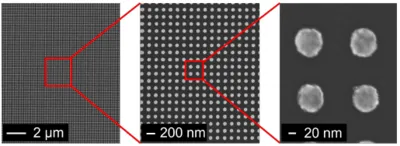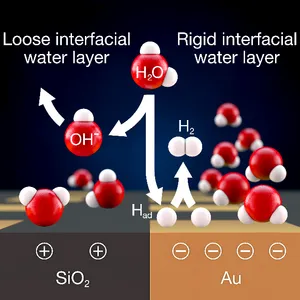Nanostructured Electrodes
Conventional electrocatalysts consist of a single catalytically active material that has similar surface properties throughout the entire active area. In contrast, nanostructured electrodes being composed of different materials may exhibit synergies from the distinct materials and lead to enhanced electrocatalytic activity. We investigate such cooperative effects on nanostructured electrodes being composed of metal and insulator patches. This material combination in addition allows for a tailoring of the double layer properties, as we could demonstrate with the hydrogen evolution reaction under acidic and alkaline conditions.
Recent publications:
T. L. Maier, M. Golibrzuch, S. Mendisch, W. Schindler, M. Becherer, K. Krischer,
Lateral silicon oxide/gold interfaces enhance the rate of electrochemical hydrogen evolution reaction in alkaline media
J. Chem. Phys. 152, 154705 (2020)
M. Golibrzuch, T. L. Maier, M. J. Feil, K. Krischer, M. Becherer,
Tuning the feature size of nanoimprinting stamps: A method to enhance the flexibility of nanoimprint lithography
J. Appl. Phys. 131, 124301 (2022)
T. L. Maier, L.B.T. de Kam, M. Golibrzuch, T, W. Angerer, M. Becherer, K. Krischer.
How Metal/Insulator Interfaces Enable an Enhancement of the Hydrogen Evolution Reaction Kinetics
ChemElectroChem, in press. doi.org/10.48550/arXiv.2309.02229

